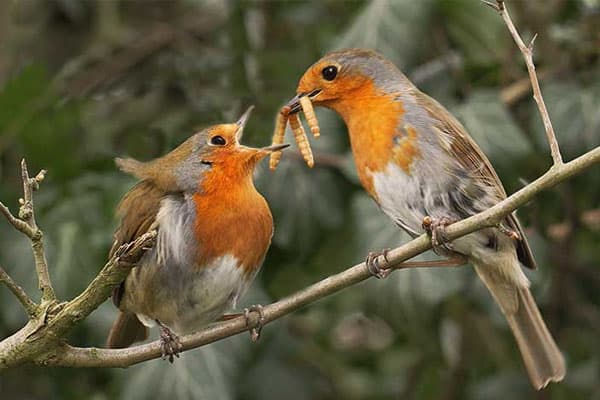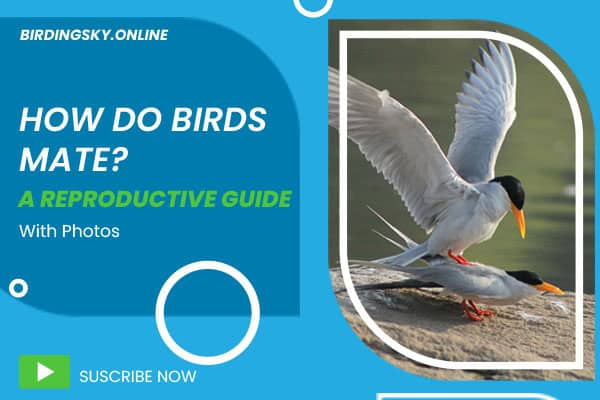Are you curious to know about How Do Birds Mate? If yes then you’re on the right place.
Welcome to our comprehensive guide on the fascinating process of bird mating! Have you ever wondered how birds reproduce? How do they court potential mates? And what happens during the act of mating? Join us as we delve into the world of bird courtship, reproductive anatomy, and the intricate behaviors that ensure the continuation of bird species.
Understanding Bird Reproductive Anatomy
Before we can truly comprehend the wonders of bird mating, it is crucial to delve into the intricacies of their reproductive anatomy. Both male and female birds possess cloacas, which are multi-purpose openings that serve as the exit for waste and the epicenter of reproduction. Within the realm of bird reproduction, penises are absent, and instead, the male bird’s cloaca takes on the role of transferring sperm to the female bird’s cloaca.
The cloaca, a vital reproductive organ for birds, performs the crucial task of ensuring fertilization within the female’s body. This amazing process occurs internally and allows for the union of male and female gametes, ultimately resulting in the creation of new life. One can only marvel at the fascinating mechanisms at play within avian reproductive systems.
The Courtship Rituals and Nesting
Many bird species engage in elaborate courtship displays as a prelude to mating. These rituals often involve intricate dances, displays of colorful feathers, and vocalizations to attract a mate. The courtship behaviors of birds are diverse and species-specific. Some birds perform impressive aerial displays, others create intricate nests as part of their courtship rituals.

The courtship process serves as a way for birds to establish pair bonds and demonstrate their fitness as potential mates. The visual and auditory displays are meant to attract the attention of the opposite sex and signal readiness for reproduction. These courtship displays are often captivating to observe, with birds showcasing their vibrant plumage, intricate dances, and mesmerizing songs.
Once a pair has formed, they will search for a suitable nest site and work together to build a nest. Nesting habits vary among bird species, with some birds constructing intricate structures using sticks, leaves, and other natural materials. Others may utilize existing tree cavities, rock crevices, or even human-made structures like birdhouses.
Examples of Bird Nesting Habits
| Bird Species | Nesting Habits |
|---|---|
| Robins | Build cup-shaped nests made of twigs, grass, and mud. |
| Weaver Birds | Create elaborate woven nests suspended from branches. |
| Hummingbirds | Construct small, compact nests using plant fibers and spider silk. |
| Penguins | Form nests using rocks or pebbles in colonies located on ice or rocky terrain. |
The timing of mating and nesting varies among different bird species. Many birds have designated mating seasons, also known as breeding seasons, which are influenced by factors such as food availability and the changing seasons. During this time, birds will engage in courtship displays, mate, and subsequently build nests for their young. The synchronization of mating and nesting behaviors ensures the survival and successful reproduction of bird species.
Understanding the courtship rituals and nesting behaviors of different bird species provides valuable insights into their unique adaptations and reproductive strategies. It allows us to appreciate the beauty and complexity of bird behavior and emphasizes the significance of conserving their habitats for future generations.
How do birds mate: The Act of Mating
When the time is right, the male mounts the female from behind, balancing on her back. He then arches his back and moves his tail to align his cloaca with hers, in a behavior known as the “cloacal kiss.” This allows the sperm transfer from the male to the female.
The act of mating is swift and does not involve the penetration of a penis. It is a unique reproductive strategy that has evolved in birds.
| Aspect | Description |
|---|---|
| Male Mounting | The male mounts the female from behind, balancing on her back. |
| Cloacal Kiss | The male moves his tail to align his cloaca with the female’s, allowing sperm transfer. |
| Penetration | Mating in birds does not involve the penetration of a penis. |
Observing the copulation process in birds is truly remarkable, as these unique reproductive behaviors ensure the successful transfer of sperm for fertilization and the continuation of their species.
From Egg-Laying to Raising Chicks
Once a female bird has successfully been inseminated by a male, she will proceed to lay her eggs. The exact location of egg-laying depends on the species; some birds prefer to lay their eggs on land, while others choose to lay them in the water. Whatever the chosen location, the female carefully prepares a nest or finds a suitable spot to ensure the safety of her future offspring.
The eggs will eventually hatch into adorable young birds, commonly referred to as chicks. These fluffy little creatures are completely dependent on their parents for care and protection. The male and female birds work together to provide for their offspring, taking turns in tasks such as keeping the eggs warm and searching for food.
There are bird species, such as swans, that exhibit remarkable dedication to their young. These birds mate for life and take on the responsibility of raising their chicks together. It’s a heartwarming sight to witness the bond and cooperation between male and female swans as they nurture their offspring.
Birds, with their unique and exclusive reproductive behaviors, offer us a captivating glimpse into the wonders of nature. From the process of fertilization to the nurturing of chicks, observing these remarkable creatures in their natural habitats truly enhances our appreciation for the diversity and beauty of the avian world.
Bird Mating: A Celebration of Avian Reproduction
Birds have a fascinating way of bringing new life into the world, and their unique reproductive behaviors never cease to amaze us. From the delicate courtship rituals to the successful insemination that ensures reproductive success, bird mating is a celebration of nature’s ingenuity.
One remarkable aspect of bird mating is how male ducks, for example, manage to pass on their genes without traditional penises. Instead, they rely on the transfer of sperm through their cloacas, ensuring the successful fertilization of eggs. This adaptive reproductive behavior ensures their reproductive success and allows them to continue their lineage.
But it’s not just the mechanics of bird mating that captivate us. It’s the intricate courtship rituals that male birds perform to attract their potential mates. Whether it’s dazzling displays of colorful feathers or mesmerizing dances, these behaviors exemplify the lengths birds go to find a partner and reproduce.
As we delve into the wonder of avian reproduction and unravel the complexities of bird mating, we gain a deeper appreciation for the diversity of life in the animal kingdom. It’s a testament to the resilience and stunning adaptations that birds have developed to ensure the continuation of their species.
Check Our Previous Articles:
Frequently Asked Questions
Q: How do birds mate?
A: Birds mate through a process called copulation. The male mounts the female from behind and aligns his cloaca with hers in a behavior known as the “cloacal kiss.” This allows the transfer of sperm from the male to the female. Birds do not have penises, so penetration does not occur during mating.
Q: What is the reproductive anatomy of birds?
A: Both male and female birds have cloacas, which are multi-purpose openings that serve as the exit for waste and the point of reproduction. The male’s cloaca transfers sperm to the female’s cloaca, where fertilization occurs internally within the female’s body.
Q: Do birds engage in courtship rituals?
A: Yes, many bird species engage in elaborate courtship displays as a prelude to mating. These rituals often involve intricate dances, displays of colorful feathers, and vocalizations to attract a mate.
Q: How do birds build nests?
A: Once a pair has formed, they will search for a suitable nest site and work together to build a nest. The timing of nesting varies among different bird species and is often influenced by factors such as food availability and the changing seasons.
Q: How do birds reproduce?
A: After successful insemination, the female bird will lay her eggs, either on land or in the water, depending on the species. The eggs will hatch into young birds, known as chicks, which the parents will care for and protect.
Q: How do birds raise their chicks?
A: Birds take care of their chicks by providing them with food, protection, and teaching them essential survival skills. Some bird species, such as swans, mate for life and raise their chicks together.


Add comment